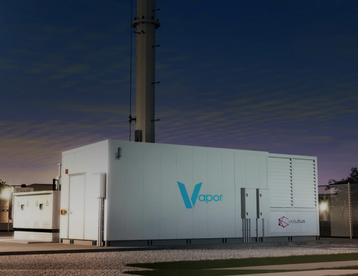The Edge was already growing at an impressive rate before the Covid-19 pandemic and lockdown. But rather than depress sales or installations, the global crisis may have spurred on Edge deployments as people work from home and kids are homeschooled.
According to the consultancy Frost & Sullivan, 90 percent of industrial enterprises will be utilizing Edge computing by 2022, with the multi-access Edge computing (MEC) market set to reach $7.23 billion by 2024, a huge gain from the mere $64.1 million in 2019.
And in IDC’s recent Datacenter Operational Survey, 72 percent of respondents indicated their usage of colocation will increase over the next 12 months. Additionally, 79 percent of respondents are planning to deploy more IT services at Edge locations and 40 percent plan to outsource their Edge initiatives.
“Organizations are recognizing the limitations of centralized data centers and are looking to Edge computing as a way to reduce latency for real-time applications, minimize communication costs, and achieve the scale needed for data-intensive workloads like AI. As this trend continues, IDC predicts that by 2023 over 50 percent of new enterprise IT infrastructure will be deployed at the Edge rather than corporate data centers, up from less than 10 percent today,” said Dave McCarthy, research director for Edge strategies at IDC.
This feature first appeared in the August Edge in the Modern Age supplement. Read it for free today.
Edge cases
All of this is good for the vendors who stand to gain from Edge growth, but they are also flying blind. The Edge is still largely unproven. It’s not like operators can draw on their decades of accumulated experience from running data centers because Edge deployments are very different animals.
Added to that, the Edge lags way behind in certifications that have been around for decades in data centers, such as resilience and uptime guarantees, and this is a tough time for growing pains.
But growing it is, and there is already one notable change in Edge data center designs, notes McCarthy. Initially, people would build their own small data center in a ruggedized container from EdgeConneX or Schneider Electric. It was entirely the owner’s facility to use.
But now we are seeing more Edge data centers being offered as a managed service with multiple tenants. “It’s like an extension of colos but instead of trying to build a hyperscale colo, they are smaller. That’s where a company like Vapor IO comes in. The strategy is to look for geographic locations that might be underserved, tier 2/tier 3 markets that need data center capacity but no one is there to serve the market,” he says.
Cole Crawford, CEO of Vapor IO, explains: “We do have multiple sizes available to our customers based on their needs. Some customers want to be single tenant and have the only key to the door, while some customers don't mind taking a quarter rack in a multi-zone vertical rack,” he says.
Changing deployment strategies
Another thing that is changing is the location decisions. Early Edge sites were often at the foot of a cell phone tower.
“Early deployments were hub and spoke and didn’t have a lot of resiliency,” said McCarthy. “Now they are more cloud-like. ” They are using hardware and software to move towards microservices and add resiliency to network connections, he said.
If it doesn’t have to be in a cell tower, some Edge can retreat inside traditional data centers. Equinix claims to have Edge deployments right inside its facilities, usually large, traditional buildings on a campus: “Edge deployments are becoming a popular concept because of the proximity between compute and users, which in turn allow for better response time. Our existing data center customers deploy with us to be closer to their end-users, and they are able to address bulk of their latency requirements with our interconnection oriented architecture,” said Jim Poole, vice president of business development at Equinix.
Meanwhile, Vapor IO is pushing out, but not necessarily to towers. The first thing it does in a new region is identify all the fiber routes, paying attention to fiber aggregation points, says Matt Trifiro, chief marketing officer for Vapor IO.
You don't actually need the data center literally at the tower any more, he told DCD: “In fact, that's often not a great idea. You want the data center close enough to provide sub-one millisecond latency - not just to one tower, but multiple towers, potentially even hundreds of towers.”
To add to the confusion, the Covid-19 pandemic has changed the drivers for the Edge in two ways, according to Luca Beltramino, senior vice president of global programs for the Uptime Institute, an authority on resilience.
“People have lost their jobs, and companies have less money to spend in extra performance, and employees do not have much reason to convince their employer that they will need the next mobile model to be more productive,” he said.
“The demand for the magic 5G has been replaced by the demand for low latency home based services, like video conferencing and content-based entertainment, etc. Therefore, a different demand and different Edge deployment is taking shape,” Beltramino added.
McCarthy concurs. “If anything, Covid has driven demand for Edge because people are no longer in a centralized office, they are distributed, like the Edge,” he said.
Software reduces truck rolls
Edge containers are much more complex than an Xbox, where you plug it in and go. You can't just drop a hardened container off at a base station or other strategic point and assume it will just run. It needs to be configured and maintained. So while the focus is on the equipment in an Edge deployment, the software is what makes it work.
Some of the large international data center consultancy companies like CBRE and large tech manufacturers like Vertiv, Schneider and Huawei are working on DCIM software that can manage the process of remote management. Some operators are doing the same.
In Equinix’s case, since its Edge services are in its facilities, there is no need to roll a truck out for maintenance. However, the company has made extensive investments in automation, with its Equinix Cloud Exchange Fabric (ECX-F) - an SDN-enabled interconnection platform that handles moves and changes at software speed, said Poole.
Vapor has to ship hardware, and seeks to minimize techs to the site, especially in multitenant scenarios where there is scarcely room for two customers to show up at the same time. “We built Vapor cloud down, not brick and mortar up,” said Crawford. “We literally started at the APIs and worked backwards into what was needed. One of the things that made a company like Vapor possible is the virtualization of the core.”
Having to send a human out to a facility is potentially the most expensive thing you can do. The fix for Vapor is predictive maintenance to identify when parts are likely to fail. Its customers do the monitoring of hardware via a hardware monitoring API.
“All the major cloud providers do machine learning predictive maintenance on their data centers, this just extends to the Edge and reduces the number of truck rolls,” said Trifiro.
What does the Edge need?
So what’s next for the Edge? Maturation, notes Poole. “At the moment, the market currently doesn’t have a good grasp of the long-term operating model for Edge. Standardization and certifications will follow as the market for Edge deployments evolves and there is industry consensus on the most practical and viable ways to achieve the Edge efficiencies,” he said.
It will be a while before someone puts a stake in the ground and says this is the best way to do it because so much is still emerging, notes IDC’s McCarthy. He encourages buyers to really read the fine print on SLAs and contracts: “When you do you will find out a lot of providers have varying opinions on what they are guaranteeing. Some guarantee uptime but so much of the need Edge offers is performance. That is an area often not included in SLAs.”
Beltramino said Edge computing needs something similar to the DevOps model in software development, which is the combination of IT operations and software development.
“This was done to make the development of operation software more efficient and flexible, to build non-existing bridges between operational teams, and software developers. That type of process has not yet fully happened in data centers nor in Edge data centers and must now occur in the data center sector, with OT and IT,” he said.


